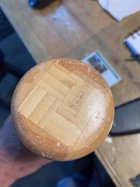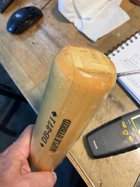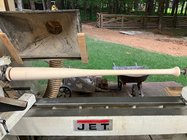I have a request (paying) to make a baseball bat. It will get used so needs to be functional and sturdy. He cracked the one he has so I have a temple to use. The one he broke is a glue up maple construction (DB-271 Hybrid Maple is the name) so intend to make it out of maple. I can find maple baseball bat blanks online but don't know anything about what to look for re grain orientation, etc. Any advice would be appreciated.
I see Rockler sells maple baseball bat blanks for a reasonable price with some good reviews. I assume the blanks are selected for use as a bat.
I see Rockler sells maple baseball bat blanks for a reasonable price with some good reviews. I assume the blanks are selected for use as a bat.
Last edited:





